Director Dan Trachtenberg’s Prey not only revived the Predator franchise with its story of a Comanche hunter battling a terrifying alien hunter, but it also earned the best reviews of the entire film series.
Released on Hulu in August, Prey is set in 1719 and features one of the Predator franchise’s titular extraterrestrials testing its mettle against a variety of wild animals — including a wolf and bear — before challenging the human inhabitants of the region. Overall visual effects supervisor Ryan Cook led a team of visual effects studios tasked with bringing the Predator’s hunt to life, and relied on primary studio MPC and its VFX supervisor, Chris Uyede, for more than 600 shots in the film.
Uyede spoke to Digital Trends about the process of reimagining the Predator and its signature cloaking technology, looking to the past for inspiration, and creating one of the film’s most memorable sequences — when the Predator goes toe-to-alien-toe with a massive bear.
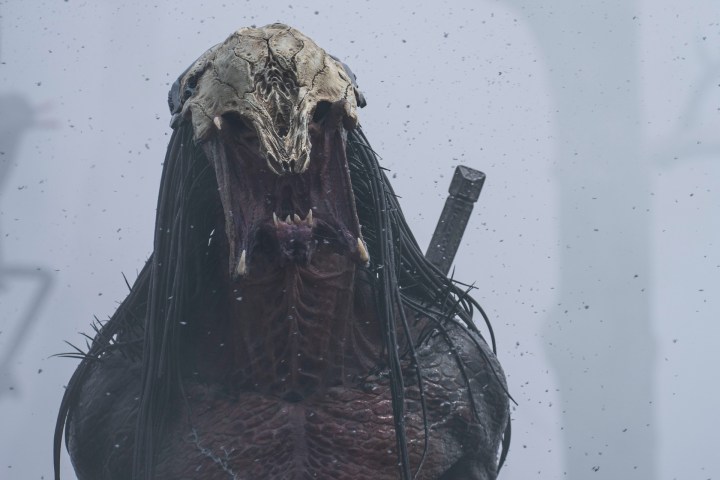
Digital Trends: What was the breakdown like as far as digital effects and practical effects in the film? Where did the actor in the Predator suit typically end and the visual effects begin?
Chris Uyede: For the most part, any time the Predator is visible, they had Dane [DiLiegro], the stunt actor that was playing the Predator. In all the photography, there was always a Predator on set with the actors. In some cases, for example with facial close-ups, we would take and augment pieces — like seams on the suit — and replace things like hands or such.
What about when the Predator is cloaked?
When the Predator is cloaked or semi-cloaked, Dane would normally be performing those pieces, but then we would track the Predator’s body motion, and occasionally add our computer-generated Predator sometimes to augment or change the performance based on what the director wanted.
Sometimes we just took the Predator, removed him from the shot, and added in our cloaked version of the Predator. Obviously, the Predator does a whole bunch of superhuman things, like leaping through the trees, and in those cases he was all-digital, too.
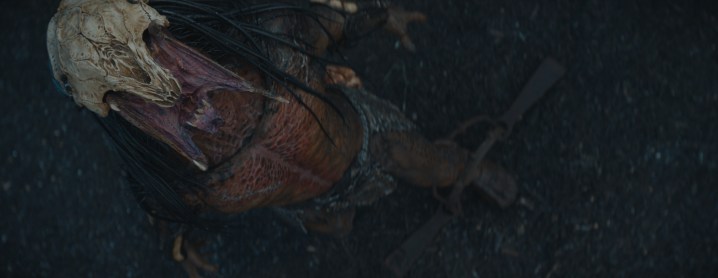
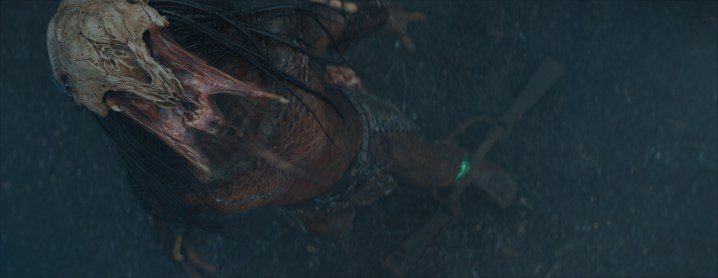
Having seen some video of Dane out there, he really inhabits the Predator character. How did that translate on your side?
Dane really was a great Predator. [He’s such] a huge, really physical actor. In some of the stuff, like in the Predator’s standoff with the wolf, we had him rigged with motion capture, so his performance was then transmuted on to the digital Predator.
This Predator looks a bit different from past Predators. How did the look evolve over time?
Well, the the practical suit was really awesome. Studio ADI, they’ve done tons of stuff historically, including some of the older Predator builds, and they did a great job. It was a full, animatronic face. Ryan Cook, the production VFX supervisor, had a lot to do with it. ADI sculpted the suit, and the question became, how can we augment this? What can we do in CG that a suit can’t do? Some of that gets down to stuff like the facial performance or making certain things look like flesh rather than latex.
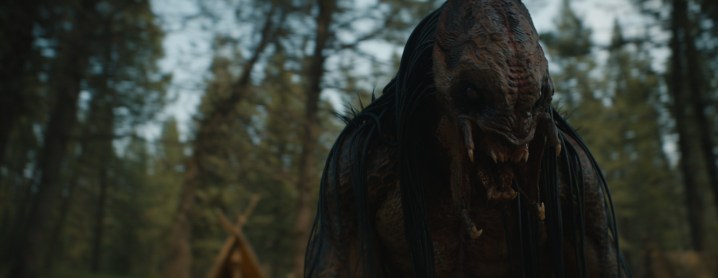
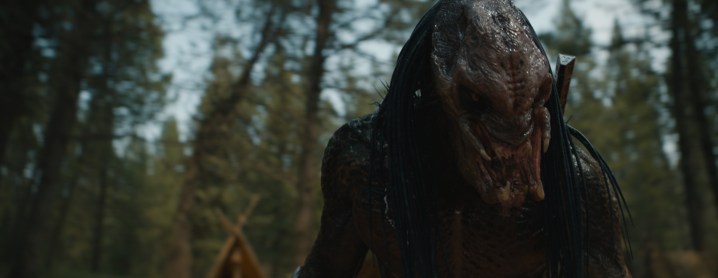
Tell me about designing the cloaking element of the Predator’s armor. How did you develop the look of the cloaking technology?
Predator’s cloak is obviously a big part of the canon. We spent a lot of time early in production trying to figure out what our version of the Predator cloak is. We looked at all the previous films trying to see where we could take some inspiration from the old-timey optical effects of the original ’80s movie, and showed a bunch of iterations on the look to Dan, trying to do some new stuff with it, like the red coloration.
In terms of how we applied it in the movie, for every shot with a cloaked Predator, we had a CG predator that was either motion-captured or tracked to the performer, or in some cases, keyframe animated. So we always had a full-CG predator in every shot it was supposed to be in while cloaked.
Based on that 3D model, we generated a toolset that would allow us the flexibility to respond to the art direction in the scene. Sometimes the Predator is barely detectable, like a smearing of the background, and other times, the cloak is either malfunctioning or the Predator is seen cloaking or decloaking.
The cloak itself is such a big narrative feature, because it has to give you a hint that something’s out there or show you what the invisible Predator is doing. And then, obviously, the cloak failing in parts of the story has a big narrative impact in all the films.
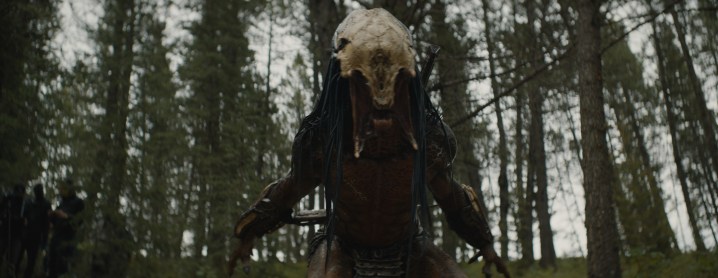
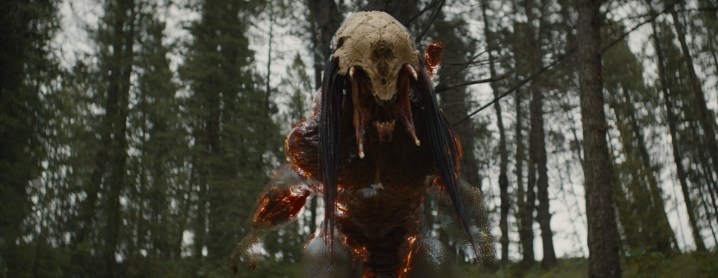
How do you get the look right when you’re trying to replicate something from a point so far behind where visual effects are now, technologically?
When you’re working on these beloved intellectual properties, you want to make sure you do the research. The Predator franchise has a pretty opinionated fan base, too, so that was super important. While Dan made something that, I think, is completely original out of it, there are all these callbacks and Easter eggs in the film, too.
You have to look at the work that’s come before and figure out how you make it fit into this stripped-down, kind of gritty, realistic world. And then also, the Predator in this film is a little bit different than Predators we’ve seen before, so his technology is similar to, but a little bit different, than previous Predators.
The timeline gave you a little wiggle room there?
It did!
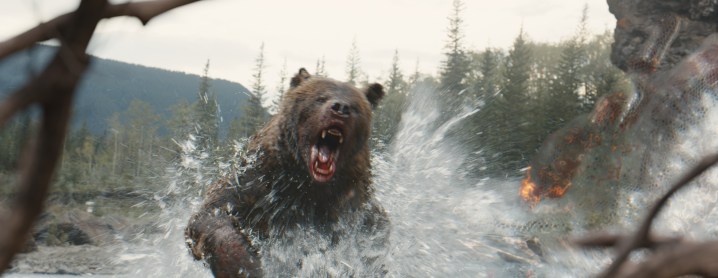
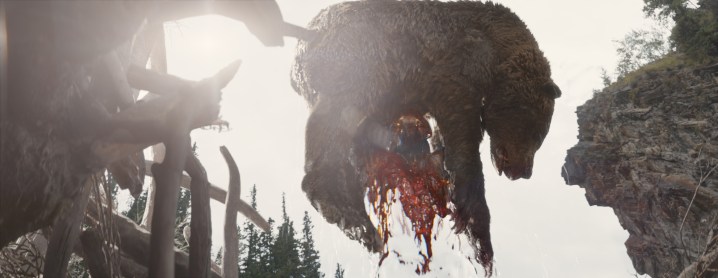
What about the big scene with the Predator fighting a bear? What went into creating that scene?
That was definitely one of the highlights for us. When I came on to the project, the storyboards for that sequence really stuck out, and you could really see how we could make some striking imagery there. It was definitely the most technically complex sequence, too. We had to build our CG bear and take a bunch of footage from the set, as it was partially shot on location in Alberta and also partially shot on a soundstage, in a water tank.
Some of the shots in that sequence are almost entirely CG. It has all of the traditional VFX hurdles, too: Water, characters interacting violently, etc. … We had to create a lot of simulations for all of the tissue and fur on the bear, as well as the blood and invisibility effects. That short little sequence encompassed some of the biggest challenges we had, and I’m pretty happy with how it turned out.
Directed by Dan Trachtenberg, Prey is available now on Hulu streaming service.





